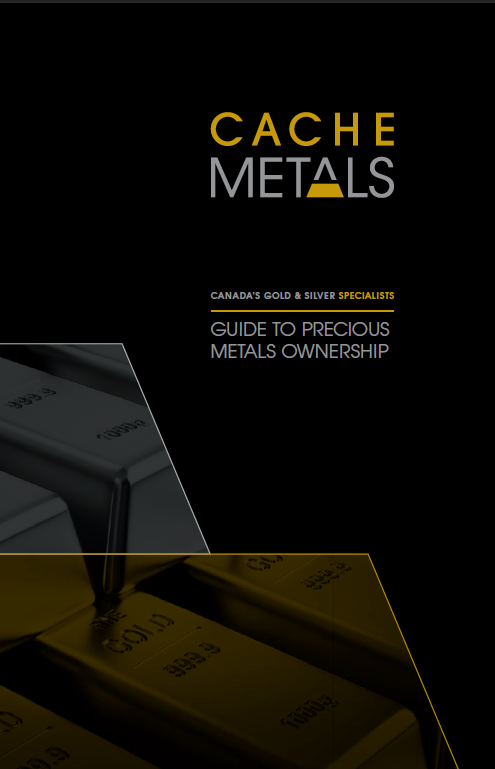
Download the complete Cache Metals Guide to Precious Metals Ownership [PDF: 934 KB]
 In today’s global climate of economic uncertainties and shifting geopolitical trends, asset diversification is seen as the preferred strategy for most investors and owning precious metals has been brought into the forefront of the public eye. Holding precious metals in a portfolio gives many distinct advantages in the form of investment gains and providing a hedge against macroeconomic and geopolitical turbulence. Precious metals have also been known throughout the ages as a trusted form of wealth preservation. Used correctly, precious metals holdings can be an effective component of a well diversified portfolio. Many financial professionals maintain that a well balanced portfolio should contain between 5–15% in gold, silver, and other precious metals.
In today’s global climate of economic uncertainties and shifting geopolitical trends, asset diversification is seen as the preferred strategy for most investors and owning precious metals has been brought into the forefront of the public eye. Holding precious metals in a portfolio gives many distinct advantages in the form of investment gains and providing a hedge against macroeconomic and geopolitical turbulence. Precious metals have also been known throughout the ages as a trusted form of wealth preservation. Used correctly, precious metals holdings can be an effective component of a well diversified portfolio. Many financial professionals maintain that a well balanced portfolio should contain between 5–15% in gold, silver, and other precious metals.
Owning precious metals can come in various forms. Use Cache Metals’ Guide as a simple and transparent way to help yourself to decide which form of ownership works best for you.
Physical bullion should form a part of every properly diversified portfolio. Bullion is the most liquid form of precious metals. Bullion comes in the form of either bars or coins. Owning physical bullion acts as a hedge against inflationary pressures and devaluation of the U.S. dollar. Should you decide to purchase bullion, you have the choice of taking physical possession of your bullion or having it held in allocated or unallocated accounts.
An unallocated account is an account where specific bars are not set aside and the purchaser has a general entitlement to the metal. It is the most convenient, cheapest and most commonly used method of holding metal. Credit balances on the account do not entitle the purchaser to specific bars of gold or silver, but are backed by the inventory of the depository with whom the account is held.
An allocated account is an account whereby the purchaser requires the metal to be physically segregated and serial numbered. The purchaser’s holdings are identified in a weight list of bars showing the unique bar number, gross weight, the assay or fineness of each bar and its fine weight.
As with all investments, the price of precious metals changes rapidly, and as such should be considered volatile. Upon entering the metals market, the risk of loss is solely that of the client. Only individuals who are capable of sustaining a capital loss should consider purchasing precious metals. Acquisitions in precious metals which are financed are considered high risk